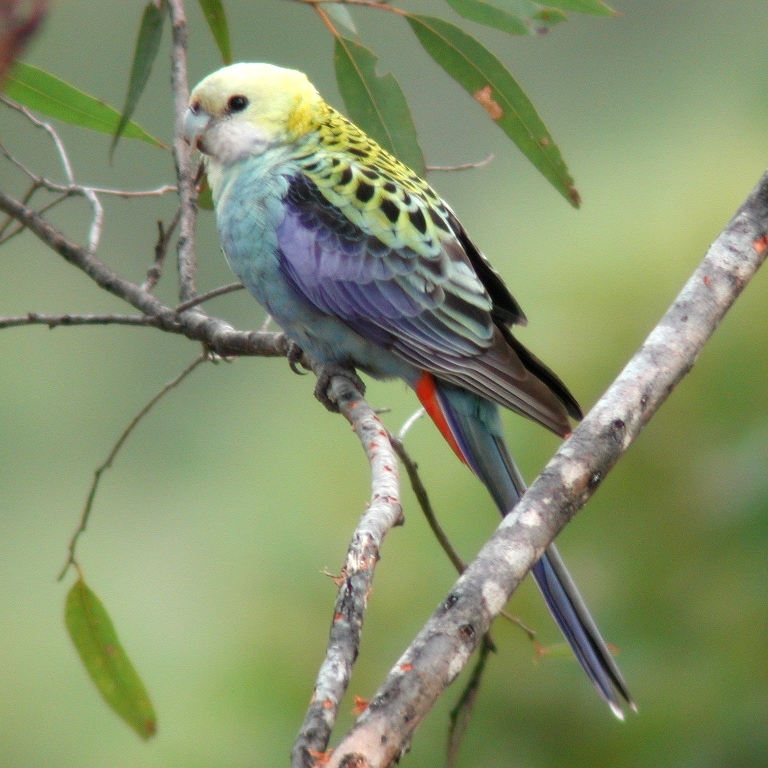
Pale-headed rosella(Platycercus adscitus)
Phylum —chordata
Class — aves
Order — psittaciformes
Family —psittaculidae
Genus – platycercus
Appearance
The Pale-headed rosella is 33 cm (13 in) long, which includes the 15 cm length of its tail. Its underparts are pale blue, and upper breast and head are pale cream-yellow, the tail which is blue-black and green and the vent which is blood red. The feathers of the nape, scapulars and back are black edged with bright yellow, giving rise to a scalloped appearance. The bill is pale blue-white and the legs dark grey. The eyes are yellow-brown. The sexes are similar in appearance, although the female is slightly smaller and duller.
Habitat
Native to Australia, these parrots live in a moderate region in the north and eastern coastal areas. They are found from Cape York, central Queensland, and New South Wales.
Behavior
Pale-headed rosella are fun-loving and playful birds that love to entertain the people around with their unique talent of whistling. They can turn anything they hear into a whistling song almost instantly. This has made them famous as companion birds in recent years. They also happen to be quite comical in their acts and sounds. This makes everyone around crack instantly at their gimmicks. But like every living being, they have their bad days too.
Pale-headed rosellas are known to be less accommodating when it comes to living with other birds. Their inherent territorial nature makes them unfit for cohabiting them with other birds of the same species. Hence, it is always advised to house only a single pair of Pale-headed rosellas in a single cage. Seeing a stranger within their territory makes them extremely aggressive too. And more often than not, they end up attacking the rival birds.
Diet
It eats grass and tree seeds and fruits, including river red-gum (Eucalyptus camaldulensis), river she-oak (Casuarina cunninghamiana), snow-in-summer (Melaleuca linariifolia) and other melaleucas, and rough cockleburr (Xanthium strumarium).
Reproduction
The breeding season varies according to region, with southern birds nesting from September to December and northern ones later from February to June. One brood is laid. The nesting site is usually a hollow over 1 m (3 ft) deep in a tree trunk anywhere up to 30 m (100 ft) above the ground. A clutch of five or six round, white and slightly shiny eggs, measuring 26 x 22 mm, is laid.
In captivity
Pale-headed rosella lifespan in the wild averages around 15 years. With a not-so-rich diet, absence of someone who can care for them and the probable dangers of being eaten by the wild animals, they hardly live beyond this age limit.
One of the most important needs of the Pale-headed rosella is space. Birds that are cramped in small cages can develop a myriad of problems and easily get sick. To remedy this, consider purchasing a cage that is spacious in comparison to the size of a Pale-headed rosella. You can also put them in an aviary.
For a successful and balanced diet, not much is needed. The basic small seed mix with oats, millet and sunflower seeds, will be a good start. Supplement it with fruit, and plenty of green veggies.
For every owner that is looking for a lively bird with a great personality, Pale-headed rosella might be the right choice. Their varied traits ensure you’re never bored with your parrot and their whistling song can help brighten your day. You will also love their playful side – provide a lot of perches, ropes and parrot toys and enjoy seeing them goof around.
 Russian
Russian
 English
English























